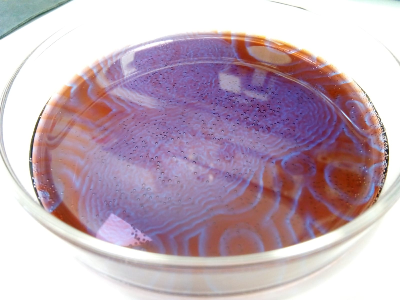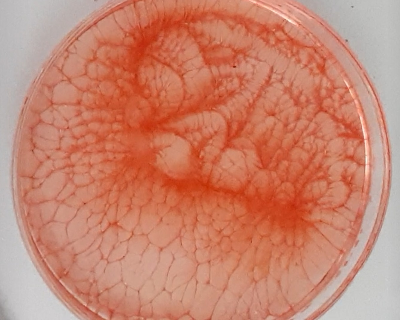Oscillation reactions
Oscillation reactions form patterns that change with time. They attract attention because of their fascinating optical appearance, but also because of the question, how these patterns are possible, even though the second law of thermodynamics says, that entropy is always increasing.
Known since around 1800 as a kind of laboratory curiosity that appear to violate the laws of nature, oscillation reactions behave more like a living organism than a chemical reaction.
Belousov - Zhabotinsky reaction.
Found 1956 by Belousov it was later studied by Zhabotinsky. Blue waves are spreading in a red solution.
Chemicals needed:
Potassium bromate, potassium bromide, sulfuric acid (conc.), malonic acid, ferroin solution (0.025 M)

Safranin and methylene blue redoxreaction
Dyes that are colourless when reduced turn red/blue again by reacting with oxygen.
Chemicals needed:
Safranin/Methylene blue, ethanol, sodiumhydroxid solution (2 M), hydroxyacetone
